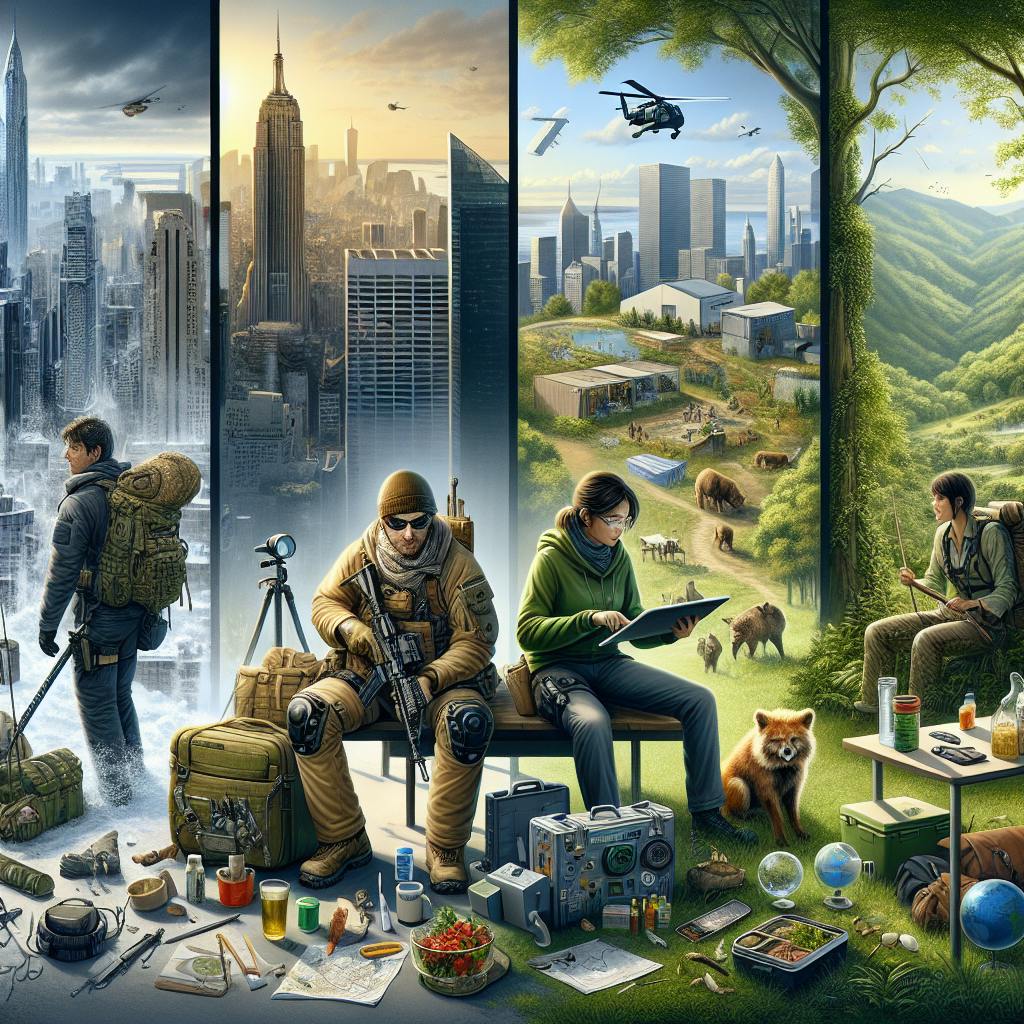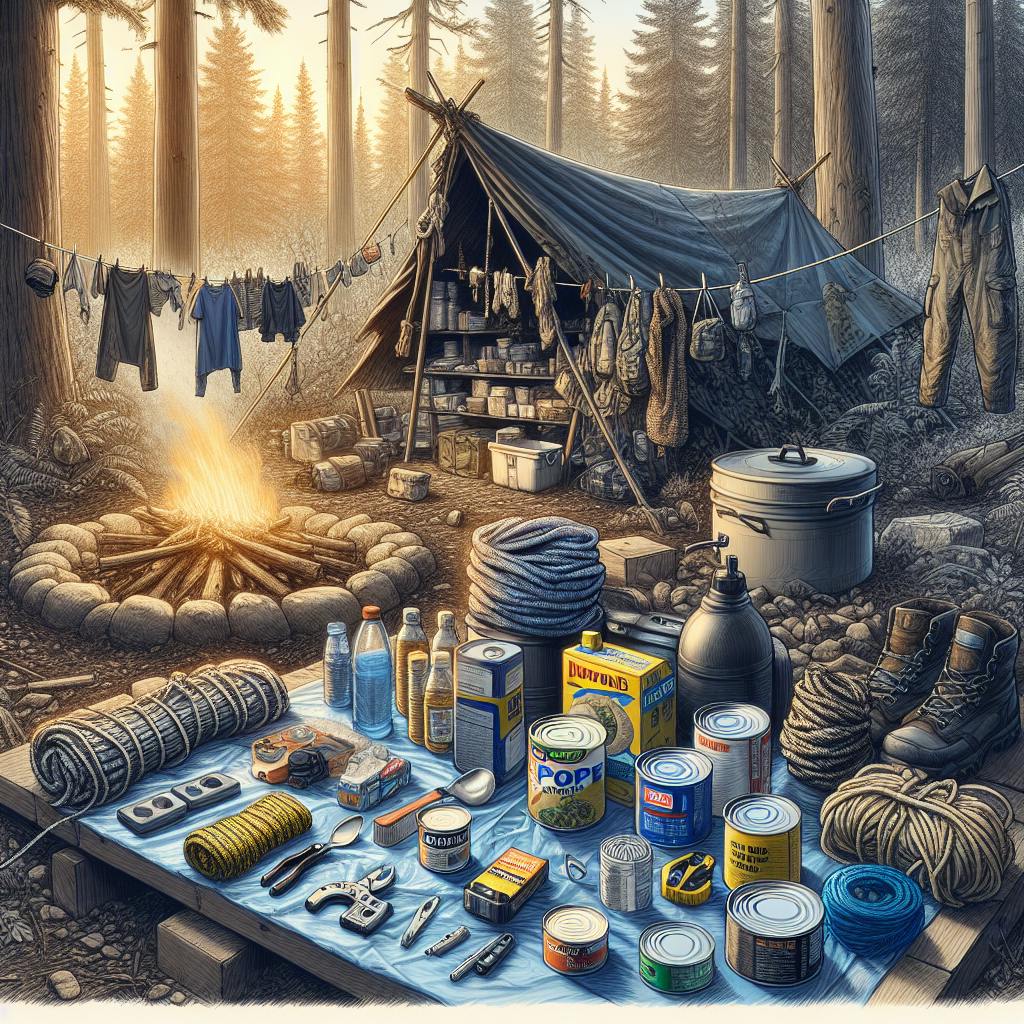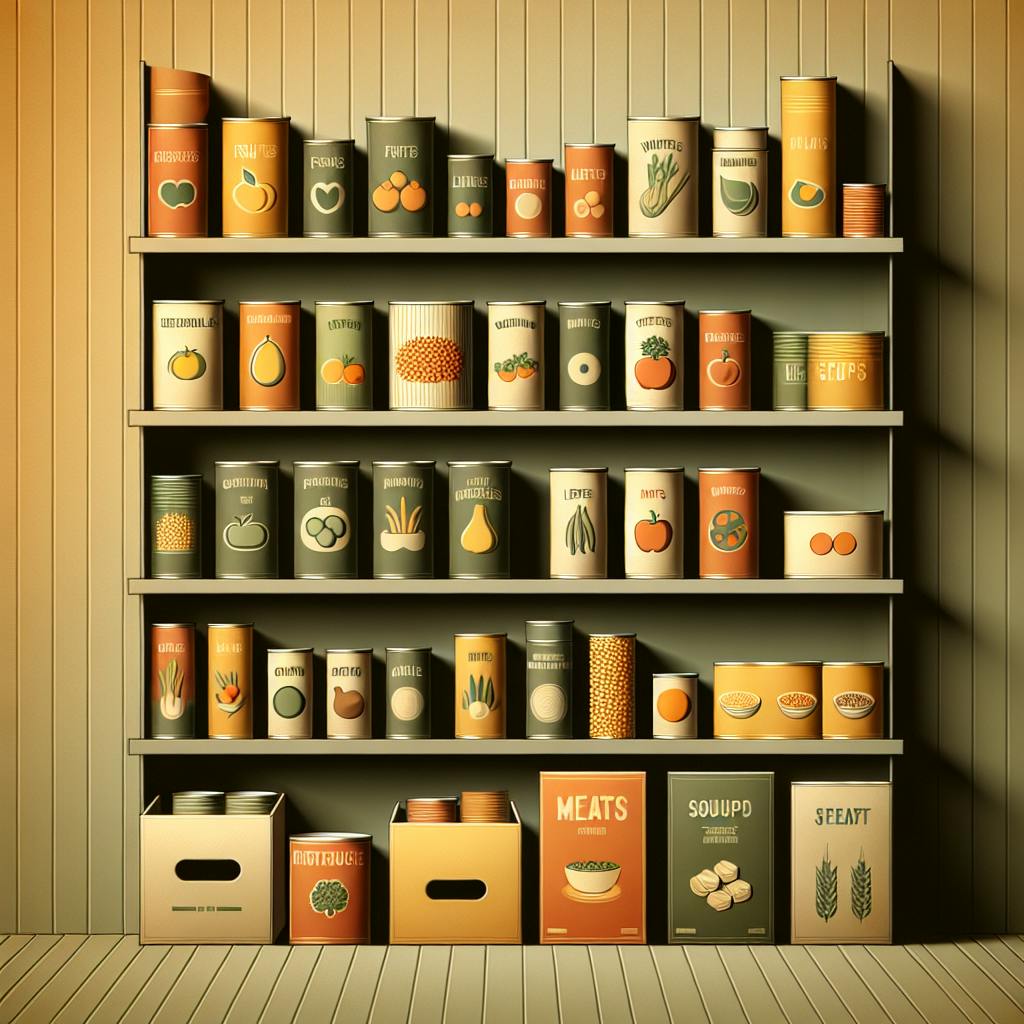Introduction to Survival Prepper Shop Checklists
Natural disasters can strike at any time, often with little to no warning. Being prepared with the right supplies from a quality survival prepper shop can mean the difference between life and death when catastrophe hits. Hurricanes, earthquakes, floods, wildfires, and tornadoes are some of the most common disasters that preppers make customized checklists for.
Having an optimal disaster preparedness checklist ensures you get all the essential gear you need to survive several days or weeks cut off from utilities and supply chains. WeLovePrepping, a top online resource developed and curated by prepping experts, provides field-tested disaster checklists trusted by preppers. Their checklists are designed for surviving specific natural disasters.
This comprehensive guide will provide key checklist sections, critical items, and shopping considerations when assembling your disaster kit from survival prepper shops. Being ready for anything with the proper planning and supplies is what it means to be a preparedness-minded individual. Read on for tips to create an effective, customized checklist.
Essential Sections of a Disaster Prepper Checklist
Every survival checklist starts with covering basic necessities in an emergency scenario:
-
Food - Stock up on long shelf-life nutrients like canned goods, MREs, freeze-dried meals, protein bars, and vitamins. WeLovePrepping recommends a 2 week supply of 2000-2500 calories per person daily. Include comfort foods as well. Don't forget pet food too!
-
Water - Store at least 1 gallon per person per day, equivalent to a 14 day supply for a family of 4. Have water purification methods like the Sawyer Mini Water Filter and purification tablets. Also pack bottled water and foldable water storage containers.
-
First Aid - A trauma medical kit like the Everlit 250 Piece First Aid Kit with bandages, gauze, ointments, medications, scissors, and gloves. Be equipped to treat injuries from debris and accidents.
-
Tools - Knives, axes, shovels, rope, duct tape, work gloves to construct shelters, gather resources, and make repairs. Consider a multi-tool like the Leatherman Sidekick.
-
Lighting - Flashlights like the Anker Bolder LC90, lanterns, headlamps, and glow sticks. Solar-powered and hand crank options available. Lights prevent injuries at night.
Checklist Considerations for Specific Disasters
Disaster checklists should also factor in threats specific to your region. Some key additions for common events include:
-
Hurricanes - Plywood, sandbags, car batteries, plastic sheeting for covering windows and reinforcements. Prevent flood damage.
-
Earthquakes - Fire extinguisher, hard hat, gas shutoff wrench. Protect from falling/burning debris.
-
Floods - Life jackets, inflatable raft, waterproof boots for wading. Escape rising waters. Consider waterproof storage containers.
-
Wildfires - Face masks, fire shelter tent, escape ladders if trapped by fire. Protect airway from smoke. Have a go-bag ready.
-
Tornadoes - Weather radio, helmets, underground shelter access. Get alerts and protect head from flying debris.
Must-Have Items for Any Disaster Kit
Some key items are universally important for all checklists:
-
First Aid Kit - The foundation with bandages, gauze, ointments to treat injuries, trauma shears. Consider the Be Smart Get Prepared 100 Piece Kit.
-
Multi-Tool - For repairing, building, cutting. Has knife, pliers, screwdriver and more. The Leatherman Signal is a top choice.
-
Emergency Radio - Crucial for getting weather alerts and emergency broadcast information to stay informed. Choose hand crank or battery powered options like the Midland ER310.
-
Flashlight - Reliable LED flashlight like the Anker Bolder LC90. Waterproof and long-lasting is ideal. Have extra batteries.
-
Whistle - Useful for signaling rescuers if you're trapped or lost. Compact and loud. Fox 40 Micro is a top pick.
Key Considerations When Assembling Your Kit
Follow these tips when stocking up from survival prepper shops:
-
Verify all expiration dates are current. Replace food, batteries, medical supplies as needed. Check at least quarterly.
-
Purchase from reputable retailers like WeLovePrepping known for thoroughly vetted, lab-tested gear. Avoid cheap knockoffs.
-
Store properly in cool, dry place to maximize shelf life. Use sealed waterproof containers.
-
Factor in unique needs like prescription medications, infant formula, or equipment for disabilities.
-
Test out and practice using your survival tools/kits frequently to ensure familiarity when disasters strike.
Where to Shop for Quality Survival Gear
Shop at these types of retailers to get fully equipped:
-
Online specialty prepping shops like WeLovePrepping are ideal one-stop shops with thoroughly vetted gear.
-
Outdoor recreation retailers have sturdy camping/hiking gear crossover.
-
Emergency preparedness stores for specialized kits, MREs, tools for disasters.
-
Military surplus stores offer rugged, durable equipment designed for extremes.
-
Hardware stores provide generators, tools for securing and repairing property damage.
-
Camping supply retailers have bug out bag basics like stoves, sleeping bags, tents.
Tailoring Your Prepper Shop Checklist
Disaster checklists should be customized based on your situation:
-
Determine specific risks based on your geographic region, climate, and home vulnerabilities.
-
Take stock of useful supplies and gear you already own to avoid duplication.
-
Estimate how long you may need to be self-reliant - 72 hours, 2 weeks, or longer.
-
Account for all family members, pets, medications, and dietary considerations like food allergies.
-
Prioritize your most vital survival needs first, then add supplemental items. Download WeLovePrepping's template to simplify planning.
Customizing for Your Situation and Needs
Checklists can be adapted to your unique circumstances:
-
Apartment dwellers should optimize for space-saving, portable items. Rely more on bug out bags.
-
Families with children need kid-friendly foods, plus games and activities for them. Pack crayons, books, stuffed animals.
-
Chronic medical conditions may require insulin, antibiotics, devices and ample medications. Have backups.
-
Don't forget pet food, medications and travel carriers for evacuating animals. Include pet first aid items.
-
Elderly have unique needs like mobility aids, medical equipment, and easy access items. Prioritize medications.
-
Special diets including gluten-free, diabetic, vegetarian/vegan must be accounted for. Research survival food options.
Planning for Evacuation vs Sheltering In Place
Your checklist changes based on whether you evacuate or shelter:
-
Evacuating calls for extremely portable, lightweight, mobile items you can take on the go. Rely on your bug out bag.
-
Sheltering in place requires tools, generators, food stores and water reserves since you'll be stationary.
-
A hybrid approach with supplies for both scenarios gives you flexibility to choose based on the disaster circumstances.
-
Have an evacuation plan with routes and destinations as well as a fortified shelter if staying.
-
Know locations of shelters and emergency meeting points for your family and group.
Storing Your Prepper Supplies and Gear
Proper storage of your kit is also critical:
-
Stow in an easily accessible area like the garage, basement, or closet. Don't pack too deeply.
-
Use waterproof containers to protect from elemental exposure. Elevate off floor to avoid flooding.
-
Rotate stock and use oldest food/medicine first to keep fresh. Take periodic inventories.
-
Keep critical documents like ID, insurance, bank info in a grab-and-go bag.
-
Have your bug out bag prepacked and by the door for emergencies.
Replacing and Updating Your Checklist
Maintain your prepper checklist:
-
Review your supplies at least quarterly and replace expired, degraded items.
-
Check for new family needs like pets, babies, or medication changes.
-
Incorporate innovative new survival products from prepper shops like WeLovePrepping.
-
Replenish first aid supplies, food, water and batteries as you use them.
-
Update your list as you gain knowledge and identify gaps. Download updated checklists from WeLovePrepping.
Practice Using Your Prepper Gear
Don't just buy gear - test it out:
-
Perform fire or evacuation drills using your equipment and bug out bag.
-
Set up your tent or shelter to ensure you can do it quickly when needed.
-
Use your alternative cooking devices like camping stoves to get familiar.
-
Do a trial run of operating your generator, safety tools, two-way radios.
-
Go camping using your survival supplies to identify improvements.
Key Takeaways on Creating Disaster Prepper Checklists
Having an effective disaster checklist is vital to survival. Keep these tips in mind:
-
Stock survival basics like food, water, first aid, tools, and lighting. Have at least a 2 week supply.
-
Customize your specific list based on your situation, location, needs, and home type.
-
Shop at reputable online prepper shops like WeLovePrepping for thoroughly vetted, quality gear.
-
Rotate and replenish goods before they expire. Take preparedness seriously.
-
Regularly practice survival skills using items in your kit to be proficient when disaster strikes.
-
Download WeLovePrepping's checklists as a starting point and customize as needed.
Staying informed and having the proper emergency supplies from survival prepper shops will give you confidence to weather any natural disaster scenario. Be prepared and stay safe out there!


